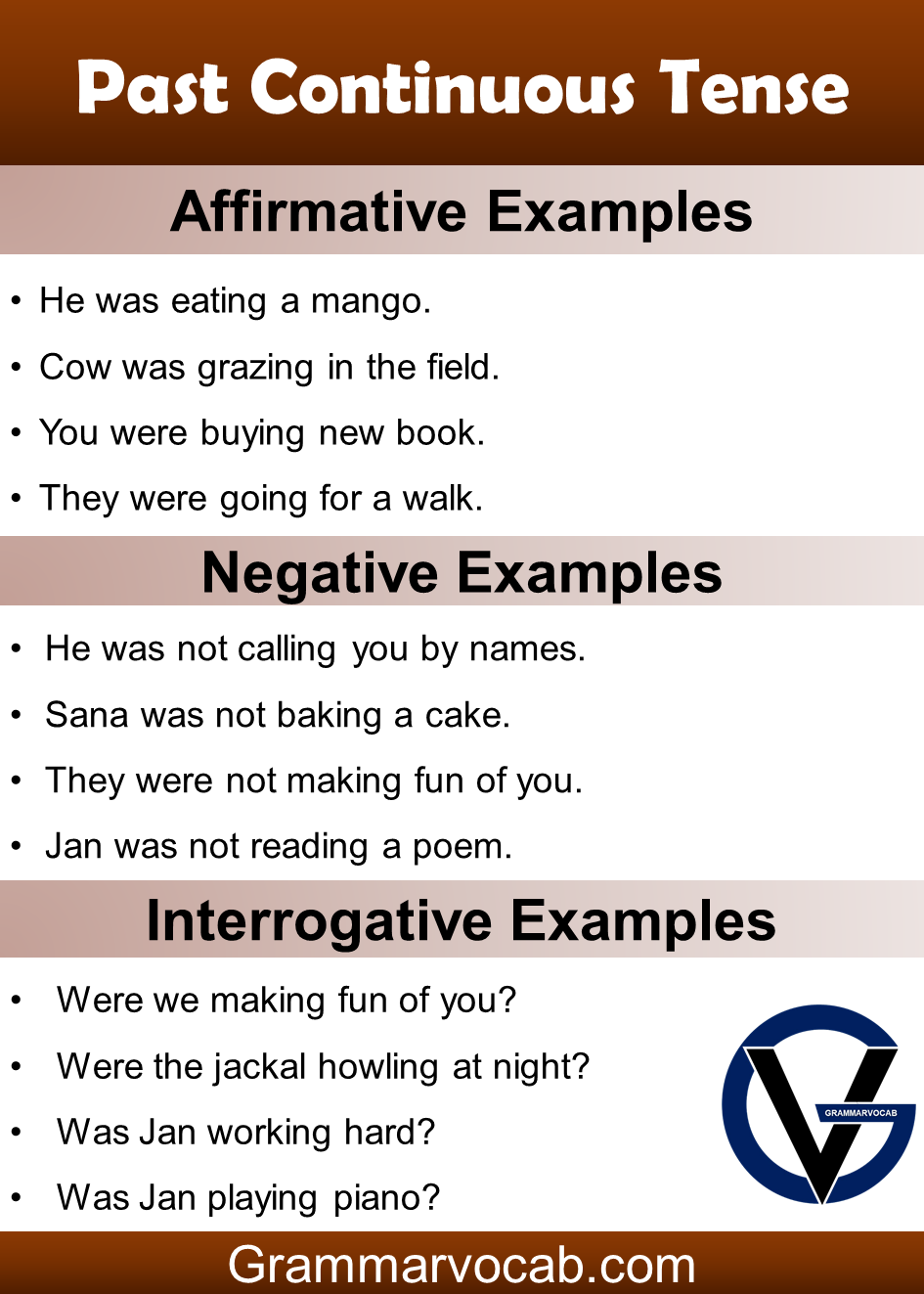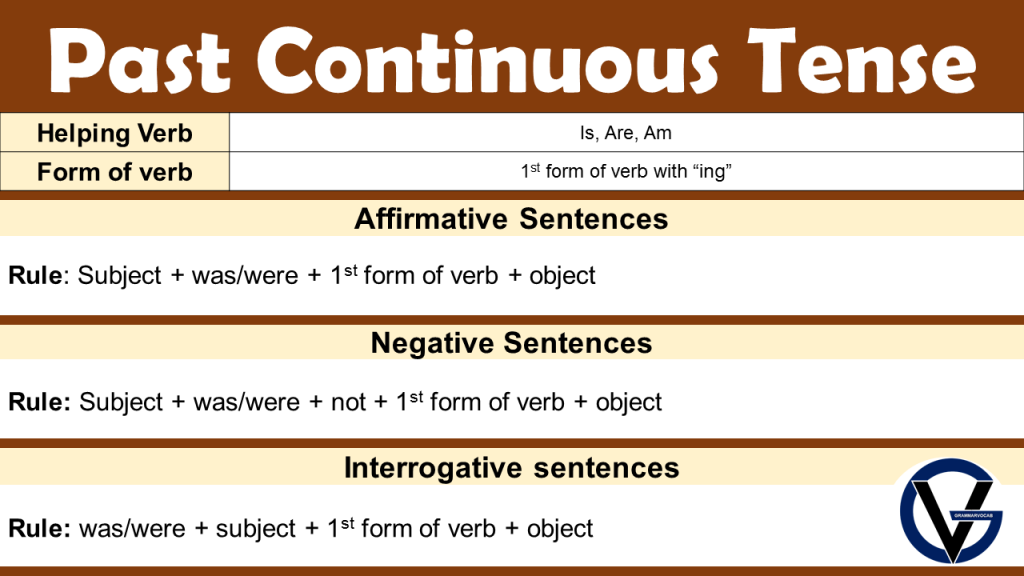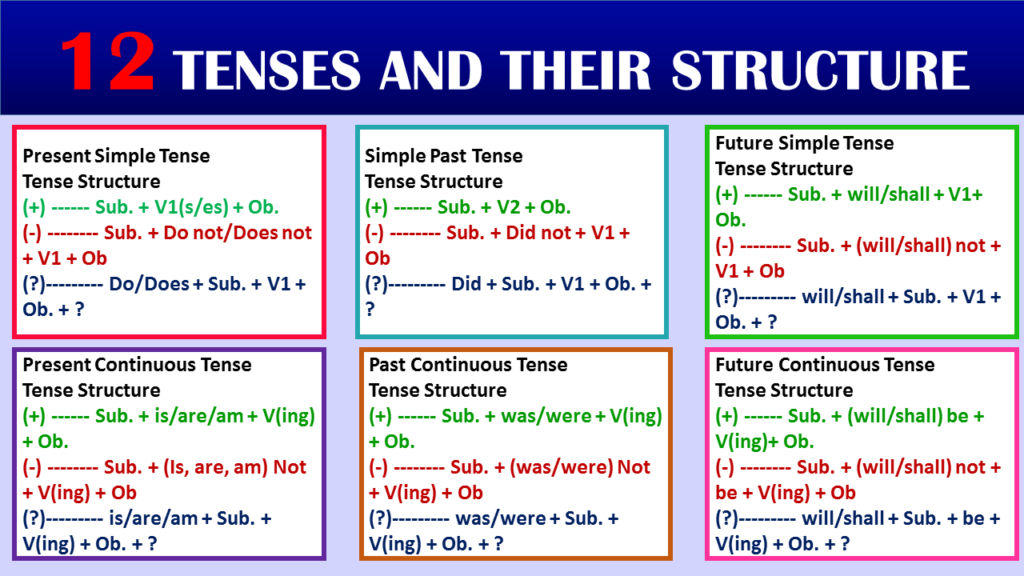English grammar can be a tricky labyrinth to navigate, with its various tenses, verb forms, and rules. One of these tenses, the past continuous tense, is a crucial tool for conveying actions that were ongoing in the past. In this comprehensive guide, we will delve into the rules and examples of the past continuous tense in English. By the end of this article, you’ll have a solid grasp of when and how to use this tense effectively in your spoken and written communication.
What is Past Continuous Tense in English?
“Past continuous tense” is a tense that shows an action that was going on in the past.
- I was sleeping.
The structure of the past continuous tense is relatively straightforward. Here’s how it’s formed:
Affirmative sentence rules
Subject + was/were + root form of verb + object.
Negative sentence rules
Subject + was/were + not + root form of verb + object.
Interrogative sentence rules
Was/Were + subject + root form of verb + object.
Past Continuous Affirmative Form
- First of all, translate the subject and put was or were according to the subject, ‘was’ is used with it, he, she, and I. whereas ‘were’ is used with you, we, and they.
- Then use the first form of the verb with the addition of “ing”.
- Lastly, translate the object and put a full stop (.) at the end.
Formula:
| Subject + | Was/were + | root form of verb
+ing + |
Object |
| You | were | eating | pizza |
| We | were | eating | pizza |
| They | were | eating | pizza |
| She | was | eating | pizza |
| It | was | eating | pizza |
| I | was | eating | pizza |
| He | was | eating | pizza |
| children | were | eating | pizza |
Past Continuous Affirmative Examples
- He was eating a mango.
- The cow was grazing in the field.
- You were buying a new book.
- They were going for a walk.
- Ali was reading the newspaper.
- We were going to the library.
- The children were playing in the street.
- I was playing in the street.
- He was sprinkling water in the street.
- He was abusing him.
- The police were chasing the thief.
- He was wasting the time.
 Past Continuous Negative Form
Past Continuous Negative Form
- Translate the subject.
- Put ‘was not’ or ‘were not’ according to the subject.
- Use the first form of verb with adding ‘ing’.
Formula:
| Subject + | Was not/were not + | root of verb+ing + | object |
| You | were not | eating | pizza |
| We | were not | eating | pizza |
| They | were not | eating | pizza |
| She | was not | eating | pizza |
| It | was not | eating | pizza |
| I | was not | eating | pizza |
| He | was not | eating | pizza |
| children | were not | eating | pizza |
Past Continuous Negative Examples
- He was not calling you by name.
- Sana was not baking a cake.
- They were not making fun of you.
- Jan was not reading a poem.
- The boys were not making a noise.
- He was not abusing him.
- He was not wasting time.
- They were not white washing the room.
- He was not calling the roll.
- Ali was not teasing the maid servant.
- The boys were not making a noise in the street.

Past Continuous Interrogative Form
- Translate the subject.
- Then put ‘was’ or ‘were’ before the subject at the start of the sentence.
- Use 1st form of verb with ‘ing’.
Formula:
| Was/were + | Subject + | root of verb+ing + | Object + |
| were | you | eating | pizza |
| were | we | eating | pizza |
| were | they | eating | pizza |
| was | she | eating | pizza |
| was | it | eating | pizza |
| was | i | eating | pizza |
| was | he | eating | pizza |
| were | children | eating | pizza |
Past Continuous Interrogative Examples
- Were we making fun of you?
- Was the jackal howling at night?
- Was Jan working hard?
- Was Jan playing the piano?
- Were the birds flying in the air?
- Were the babies changing the clothes?
- Was the man steeling the books?
- Were the girls not sewing the clothes?
- Was she not offering the prayers?
When to Use the Past Continuous Tense?
Use the past continuous tense to describe actions or events that were ongoing or in progress at a specific point in the past or to emphasize the duration of an action in the past.
Must Try:
Past Perfect Tense Formula and Examples
Past Perfect Continuous Tense in English
Images





